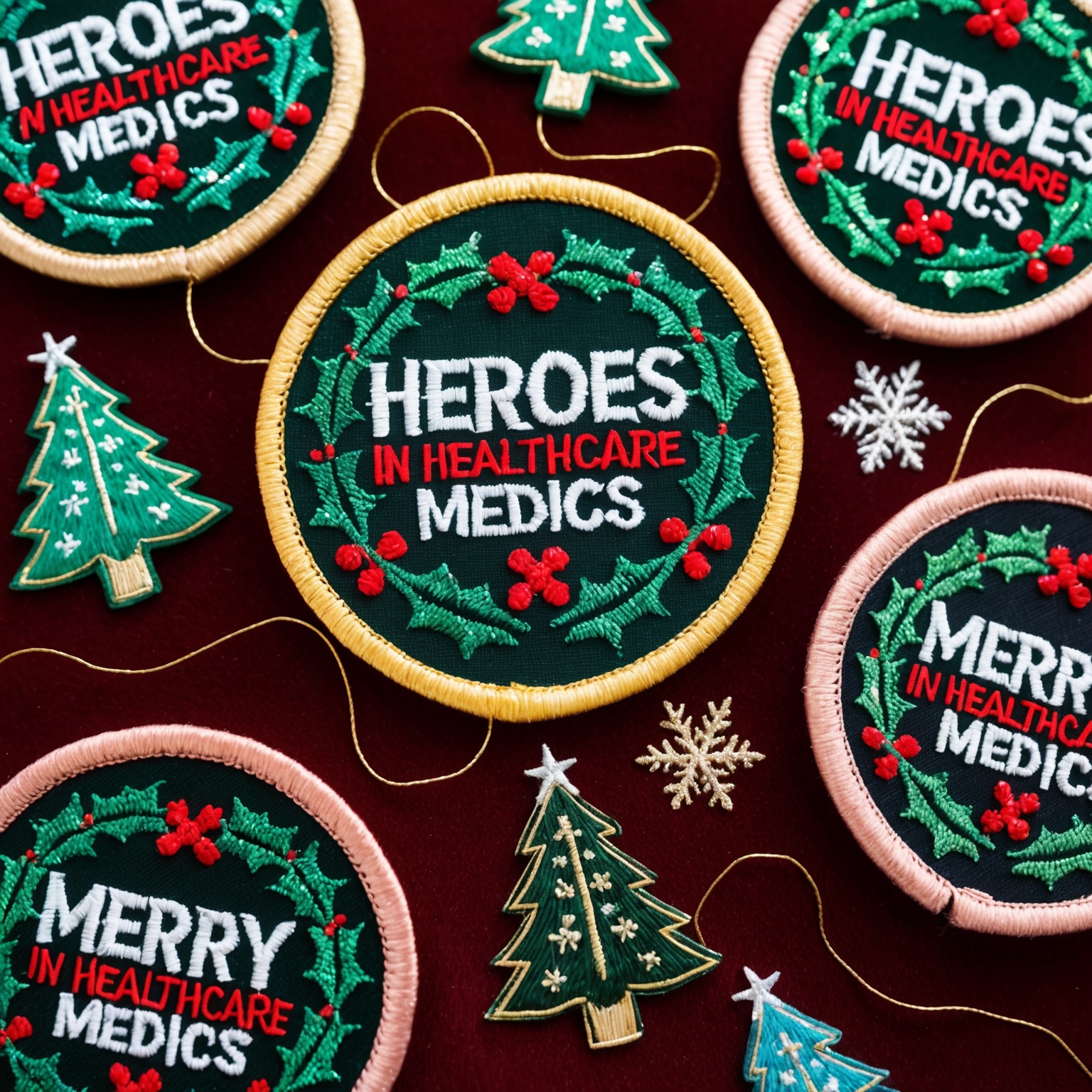Picture this: a community event bustling with activity, where police officers stand proudly among the crowd. On their uniforms, vibrant patches catch the eye, each one a symbol of their department’s unique identity and history. These patches are more than mere decorations; they are powerful symbols of unity and pride. But how do police patches enhance department identity and team spirit? Let’s dive into the world of police patches and discover their significance in building a cohesive and motivated police force.
Police patches are an integral part of a law enforcement officer’s uniform, symbolizing the department’s values, history, and mission. These patches not only serve as identification but also play a crucial role in fostering team spirit and a sense of belonging among officers. In this article, we will explore how police patches enhance department identity, address common concerns, and provide practical tips on creating impactful patches.
The Importance of Police Patches
1. Symbolizing Department Identity
Historical Significance:
Police patches often incorporate elements that reflect the history and traditions of the department. This historical context provides a sense of continuity and pride, connecting current officers with their predecessors.
- Example: A patch might feature an iconic building, significant date, or a traditional symbol that represents the department’s heritage.
Visual Identity:
The design of police patches contributes to the visual identity of the department. A well-designed patch can make the department easily recognizable and memorable to the public.
- Example: The New York Police Department (NYPD) patch, with its distinctive shield and eagle, is instantly recognizable and symbolizes authority and protection.
Some might argue that patches are outdated in the digital age.
Solution:
While technology has advanced, the need for tangible symbols of identity and pride remains. Patches provide a physical connection to the department’s heritage and values, fostering a sense of unity and belonging that digital mediums cannot replicate.
How Police Patches Foster Team Spirit
1. Building Unity and Pride
Shared Symbolism:
Wearing the same patch creates a sense of unity among officers. It reminds them that they are part of a larger team with a common mission and values.
- Example: During community events or joint operations, officers from different units wearing the same patch can instantly feel a sense of camaraderie and shared purpose.
Recognition and Morale:
Patches can also be used to recognize achievements and milestones, boosting morale and encouraging excellence within the department.
- Example: Special patches awarded for exceptional service or participation in significant operations can motivate officers and enhance team spirit.
Concerns that patches alone cannot boost morale.
Solution:
While patches are just one element, they play a symbolic role in a broader strategy to recognize and motivate officers. When combined with other recognition programs and team-building activities, patches can significantly enhance morale and unity.
Designing Effective Police Patches
1. Incorporating Meaningful Elements
Reflecting Values and Mission:
Design patches that incorporate elements reflecting the department’s core values and mission. This ensures that the patch is not just decorative but meaningful.
- Example: A patch might include symbols of justice, service, and protection, aligning with the department’s mission.
Customizing for Units:
Different units within the department can have customized patches that reflect their specific roles and responsibilities while maintaining a cohesive overall design.
- Example: A K-9 unit might have a patch featuring a dog, while a SWAT team’s patch might include tactical imagery.
Some may find it challenging to design a patch that reflects complex values and missions.
Solution:
Work with experienced designers who specialize in creating patches. They can provide templates, suggestions, and refine your ideas into a cohesive and meaningful design.
2. Choosing Quality Materials and Craftsmanship
Durability and Appearance:
Select high-quality materials to ensure the patches are durable and maintain their appearance over time. This includes choosing the right fabric, threads, and backing options.
- Example: Embroidered patches with high-thread counts offer durability and clear, vibrant designs that stand out.
Backings and Attachments:
Consider the best backing options for your patches based on their intended use. Options include sew-on, iron-on, adhesive, or Velcro backings.
- Example: Velcro backings might be ideal for tactical units that need to remove and reattach patches frequently.
Concerns about the cost of high-quality materials.
Solution:
While high-quality materials might cost more upfront, they ensure longevity and maintain the patch’s appearance, offering better value in the long run. Bulk orders can also help reduce costs.
Implementing Patches in Your Department
1. Creating a Recognition Program
Formal Recognition:
Implement a formal program to award patches for various achievements, such as years of service, exceptional performance, or participation in special projects.
- Example: An officer receiving a patch for 10 years of service feels recognized and valued, which boosts morale and loyalty.
Ceremonial Presentations:
Present patches during ceremonies or special events to enhance their significance and celebrate the achievements publicly.
- Example: Hosting an annual awards ceremony where patches are presented can become a cherished tradition within the department.
Some might think patches alone are insufficient for recognition.
Solution:
Patches should be part of a comprehensive recognition program that includes verbal acknowledgments, certificates, and other awards. This holistic approach ensures officers feel fully appreciated.
2. Engaging the Community
Public Engagement:
Use patches to engage with the community and build a positive image. Officers wearing distinctive patches at community events can foster trust and recognition.
- Example: Officers handing out smaller, commemorative patches to children at events can create positive interactions and strengthen community ties.
Fundraising and Awareness:
Sell limited-edition patches to raise funds for community projects or charity events. This can also raise awareness about the department’s efforts and initiatives.
- Example: A limited-edition patch commemorating a significant anniversary of the department can be sold to raise funds for a community cause.
Concerns about the effectiveness of patches in community engagement.
Solution:
While patches alone may not solve all community relations issues, they can be a valuable tool in a broader strategy of engagement and transparency. Positive symbols can enhance public perception and trust.
Future Trends in Police Patches
Incorporating Technology:
Explore future trends like integrating technology into patches, such as QR codes or NFC technology. This can add an interactive element, linking to digital content or department resources.
- Example: A patch with a QR code that links to a video message from the chief or a virtual tour of the department can enhance public engagement and transparency.
Conclusion
Police patches are powerful tools for enhancing department identity and fostering team spirit. By incorporating meaningful designs, choosing high-quality materials, and implementing a comprehensive recognition program, departments can use patches to build unity, boost morale, and engage with the community effectively. Embrace the potential of police patches to create a proud, cohesive, and motivated police force.
If you are interested in purchasing high-quality custom patches, feel free to call us at 1-866-903-4903 or fill out one of our FREE quotes here.




